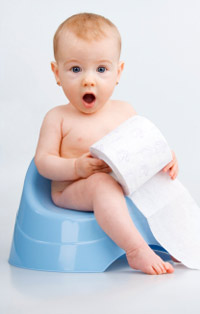Job Search
Tinies has hundreds of childcare jobs across the UK
Our Favourite Ways to Prepare for Stress-free Potty Training
Potty training can take weeks or months and there is no doubt that many parents dread it. The good news is that there are lots of things you can do now to help your child prepare for beginning the potty training process. And the good news is, you can start this preparation as early as you like
In a follow up article to Ways to Tell if Your Child is Ready for Potty Training, Kath Sloggett of The Neo Practice, says it's all about creating positive associations for your child. If you haven't tried one or more of these stress-free potty training tips, we suggest that you introduce them in a casual manner, perhaps one idea at a time, and follow your instincts as to your child's readiness.
The key to potty training is familiarisation. By making the potty or toilet seem like a normal part of life, and by relaxing and lowering your own expectations, you will help make this a less stressful transition for the whole family.
Potty training tips
The Neo Practice's stress free guide to preparing your child for potty training:
Introduce your toddler to the potty in a casual way
Let you child play with their potty and role play with teddies or dolls if they wish. You can put a potty in the bathroom, and encourage them to sit on it before a bath. If they are not interested, you can leave it out but don't apply any pressure. You want them to be interested and curious on their own.
If your child wants to try using the potty, always encourage this role play, even if it doesn't produce anything. If it does, you will probably want to celebrate, but try not to feel too victorious - this is just the start.
Some children don't understand the concept of the potty, or don't like the feeling of it, and may prefer to move straight to a child's toilet seat (the type that sits on or into the main toilet seat). We recommend the same familiarisation and role play with those seats but we strongly recommend that parents remain close by and vigilant as it can be easier for children to slip, or feel that they may slip, into the toilet. This can be very worrying for small children (see point 4 below).
Read books on potty training with your toddler
Discuss what is involved in potty training in simple terms. Keep it light-hearted and fun!
One or two books should be enough. We recommend Pirate Pete's Potty book for boys and Princess Polly's Potty book for girls. Both books are aimed at children aged 18 months+ but are engaging enough for older children too. Each of these books have a lovely story, positive messages about learning to use the potty and about inevitable early mistakes, graphic-enough drawings, and have a "cheer" button so you can cheer along as the main character learns to use the potty. Because of differences in body parts and details like underpants, we do suggest you use a gender-specific book for these purposes.
Let your child go to the bathroom with you
Although it is difficult for some parents, it is very helpful if you can let your child see you using the toilet. Ideally each parent will do this, encouraging the impression that using the toilet is very natural and something that everyone does.
You can get your child to help by flushing the toilet after you have used it (after you put the seat down - see comments below about flushing away worries). It gets them interested and gives them a responsibility. You can then wash your hands together and teach them about toilet hygiene.
Reassure your toddler about the big toilet
Adult toilets can seem enormous to toddlers, who often worry they'll fall into them and get flushed away. Try not to encourage this phobia with any comments or actions.
If your child is using a child-seat insert for an adult toilet seat, we recommend that you stay vigilant, and keep a steadying hand on your child, especially as they start. Children may slip, or feel that they might slip, into the toilet when using these seats and this can be very worrying for them.
Similarly, we recommend that you close the toilet lid after you use the toilet yourself before you let your child reach over or around the toilet to flush the toilet. Some children will be interested in looking into the bowl and perhaps discussing with you what they can see or smell. That's fine and we encourage you to do this with them. But it is more hygienic to close the lid before flushing, and it also ensures that your child doesn't slip accidentally whilst trying to flush.
Make the toilet seem normal

Don't imply toileting is disgusting. Most people aren't relaxed about their bodily functions. It is important that you try not to pass your hang-ups on to your child. Phrases like "phwoar, you smell" won't help. You ultimately want your child to see using the potty/toilet as a positive step which they associate with being a big boy/girl.
